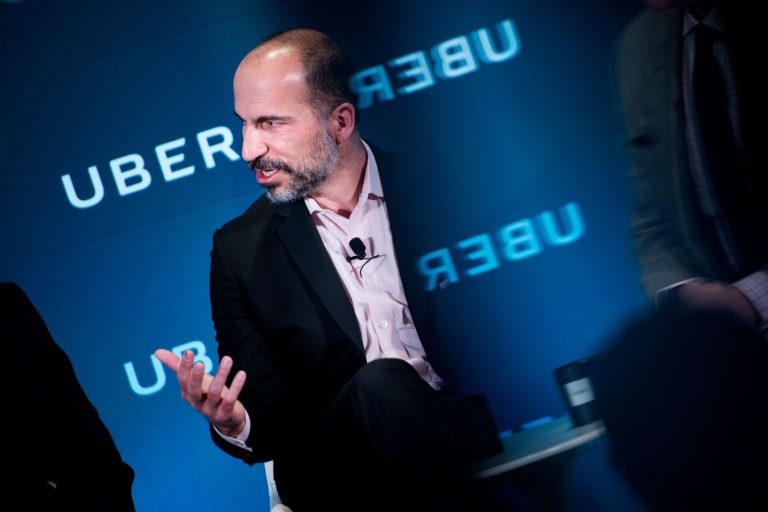
Ride-hailing company Uber, reported its third quarter (Q3) earnings for 2023, recording a revenue growth of 11% year-on-year $9.3 billion, but missed investors expected revenue of $9.5 billion.
Uber CEO Dara Khosrowshahi said revenue growth would have been 8% higher, but he told investors that the Q3 revenue was negatively impacted by business model changes in some countries that classified certain sales and marketing costs as contra revenue by $161 million
In his words,
Tekedia Mini-MBA edition 14 (June 3 – Sept 2, 2024) begins registrations; get massive discounts with early registration here.
Tekedia AI in Business Masterclass opens registrations here.
Join Tekedia Capital Syndicate and invest in Africa’s finest startups here.
“These results demonstrate that Uber continues to drive profitable growth at scale and why we believe we’re well positioned for the journey ahead, in good or bad macro environments. Our relentless focus on improving the product experience for both consumers and drivers continued to power profitable growth, with trip growth accelerating to 25%. Uber’s core business is stronger than ever as we enter the busiest period of the year”.
Turning to profitability, Uber reported a net income of $221 million in the third quarter, or 10 cents per share, compared with a net loss of $1.2 billion, or 61 cents per share, in the same quarter last year.
Revenue from Mobility grew to $5.07 billion, up 33% year-over-year, Delivery was $2.94 billion, up 6%, and freight at $1.29 billion, which fell 27% year-over-year.
In the third quarter, Uber saw total bookings rise from $29.1 billion to $35.3 billion, a gain of around 21%. In business segment terms, Uber generated $17.9 billion in ride-hailing bookings (+31% year over year) and $16.1 billion worth of delivery bookings (+18%).
Trips grew 25% year-over-year to 2.4 billion or 27 million per day. Uber’s monthly active platform consumers reached 142 million, up 15% year-over-year.
Gross bookings grew 21% year-over-year to $35.3 billion, with Mobility Gross Bookings of $17.9 billion, up 31% year-over-year, Delivery Gross bookings of $16.1 billion, up 18%, and Freight Gross Bookings of $1.3 billion, which fell 27% year-over-year.
While Uber’s ride-hailing and delivery business saw an uptick in gross bookings in the third quarter, Uber Freight experienced a 27% drop year-over-year. Revenue, as a result, had a similar fall. The business unit reported revenue of $1.3 billion in the third quarter, a 27% drop from the same period last year.
Also speaking on the company’s third-quarter result, Uber CFO Nelson Chai said,
“Strong topline trends and record profitability demonstrate the durability of our growth and, the significant earnings power underlying our platform. We continue to make disciplined investments in growth opportunities to support long-term value creation for all stakeholders.”
The ride-hailing company after the quarter had $5.2 billion in cash and equivalents and generated $905 million in free cash flow.
For the fourth quarter (Q4) of 2023, Uber disclosed that it expects to report gross bookings between $36.5 billion and $37.5 billion, compared with analysts estimation of $36.5 billion, and adjusted EBITDA of $1.18 billion to $1.24 billion.
Samsung Unveils Generative AI Model Samsung Gauss
South Korean Tech giant, Samsung has unveiled its generative AI model called “Samsung Gauss”, at the Samsung AI Forum 2023.
The generative AI model is reportedly named after famous mathematician Johann Carl Friedrich Gauss who made significant contributions to many fields in mathematics and science.
Gauss consists of three main components, which include; Samsung Gauss Language, Samsung Gauss code, and Samsung Gauss Image. Like ChatGPT, Samsung Gauss Language is a large language model that can understand human language and answer questions.
Samsung Gauss Language is a generative language model designed to boost work efficiency by assisting with tasks like email writing, document summarization, and translation. It can also enhance consumer experience by enabling smarter device control when applied to products.
Samsung Gauss Code is a coding assistant that facilitates in-house software development. It streamlines the coding process and provides interactive features like code description and test case generation.
The coding assistant can also quickly generate unit test cases and code snippets using natural language. Users can input code to debug them through a friendly interface.
Samsung Gauss Image is capable of generating and editing images, allowing for style changes, and additions. It also has the ability to generate images in different styles, like scaling a low-resolution image to High resolution image, adding new elements to an image, and many more. The AI model may work similarly to Google Pixel’s Magic editor feature in the photos app.
The generative AI model primarily has three key features, which include text, code, and image generation. It can summarize texts, generate creative ideas, translate texts, write new content, and more.
Announcing the roll-out of Gauss, Samsung said via a press release that the generative AI model is currently used in employee productivity but will be expanded to a variety of Samsung product applications to provide new user experience in the near future.
Samsung’s launch of Gauss is coming seven months after the tech giant temporarily placed a ban on generative AI tools on company-owned devices, over fears that uploading sensitive information to these platforms represents a security risk.
The company’s recent foray into generative AI marks a significant step forward, as it leverages the advanced technology to enhance consumer experience.
Samsung could be amongst the first handset makers in the world to introduce generative Al to its devices. Daniel Araujo, Samsung’s vice president of the mobile business, said on the company’s earnings call last month, disclosed that the generative Al model will likely reach customers next year.



